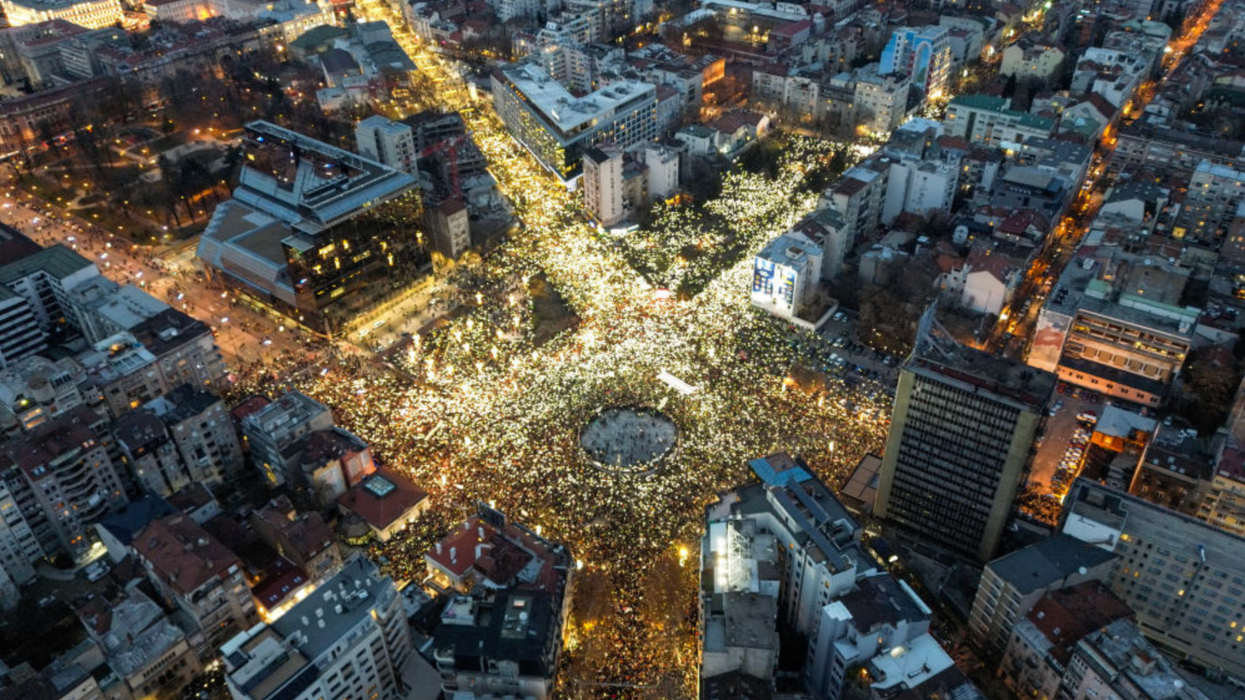Richard Davies is a journalist and podcaster. He runs the podcast consultancy, DaviesContent, and co-hosts “How Do We Fix It?” and “Let’s Find Common Ground”.
Most of us who keep up with news and current events are at times frustrated with how the media covers politics, race and culture. All too often news coverage is dominated by clashes, controversies, contests and celebrities rather than reports that include potential solutions. The emphasis is on what’s wrong rather than how things might be put right. So it’s no surprise that a large national meeting in Gettysburg during four days in July passed by almost unnoticed by the mainstream media.
The Braver Angels convention was an unusual gathering of nearly 700 people— Republicans and Democrats in approximately equal numbers. The movement’s co-founder and Braver Angels President David Blankenhorn told delegates they were at “the largest gathering so far this century of Red and Blue American leaders coming together in equal numbers and on equal terms to bridge our divides and save our country.”
Most of us who showed up spent up to 15 hours each day attending plenary sessions, breakout meetings and small group conversations. It was exhausting, but exhilarating. Delegates ate together and slept in college dorms. Some said they enjoyed being in a “safe space for disagreements” as they listened to those from the other side without feeling they had to bite their tongues or check their own opinions at the door.
On the morning of the final day, Republican Governor Spencer Cox of Utah was given a standing ovation after bounding onstage and telling the crowd “you are my people.” Cox and other speakers warned of the threats to democracy from extreme partisanship. “Rights without responsibility and sacrifice leads to chaos and a house divided that cannot long stand,” said the Governor.
“The radical selfishness we see today on both the extreme right and the extreme left is rotting our increasingly fragile republic," he added.
As this year’s new Chair of the National Governors Association, Cox spoke of his plans to launch an initiative called Healthy Conflict and Disagree Better. Governors of both parties, says the Association, will explore “a more positive and optimistic way of working through our problems.”
The convention was held on the campus of Gettysburg College, 160 years after the three-day battle in July 1863 that changed the course of the Civil War. Gettysburg was also the site of President Lincoln’s famous address.
Braver Angels, originally named Better Angels, was formed in 2016. In the introduction to this year’s agenda, the organizers wrote: “On the grounds of a great battlefield of our Civil War, we’ll meet to prevent another civil war— a war in which we tear ourselves apart with anger and distrust.”
Braver Angels is part of a growing national movement to bridge political divides. Bridge Alliance, Bridging Movement Alliance Council (BMAC), Listen First Project and Common Ground Committee are among leading innovators in the space. After facing criticism that Braver Angels had failed to fully take account of other bridging groups, the movement formed Braver Networks. Dozens of organizations have joined the outreach effort, including StoryCorps and All Sides to BridgeUSA and the Institute for Local Government.
Much of the work of Braver Angels is done by determined volunteers in their local chapters. While some regions are stronger than others, training sessions and group meetings have been held in many states. One example is “Red-Blue workshops” where small evenly divided groups of conservatives and liberals gather for a series of structured exercises aimed at helping participants “clarify disagreements, reduce stereotyped thinking and discover common values.”
Overall, the mood of the four-day Gettysburg convention was surprisingly hopeful given the enormity of the task before the delegates. But in the words of one Braver Angels leader, the first big step in pushing back against today’s rigid polarization and fierce negativity is to recognize that the nation is facing a crisis.






















